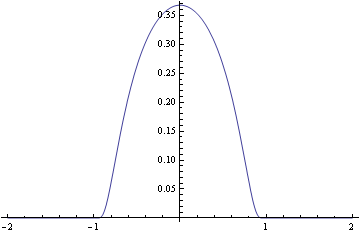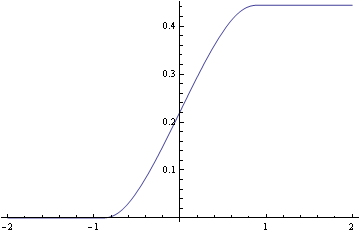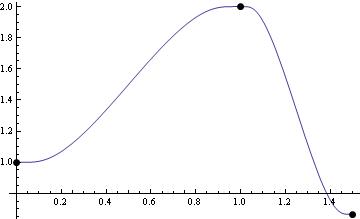Rubel’s universal differential equation
The starting point, g(x), is a ![]() function which vanishes outside the interval (-1,+1) :
function which vanishes outside the interval (-1,+1) :
![]()
![]()

Its primitive is constant outside the interval (-1,+1), resp. f(-1)=0 if x<-1 and f(1)=Ω if x>1 :
![]()
![]()

Ω is a well-defined real (no closed form is known) :
![]()
![]()
Rubel’s model, f(x), fits the given function y(x) in the interval (a,b) (exactly at the ends of the interval) :

Example of a continuous junction between two consecutive intervals, say (0,1) and (1,3/2) (numerical integration is needed) :
![]()
![]()

Differential equation fullfilled by the model function, f(x), whatever the interval :
![]()
![]()
![]()

Set W= and eliminate W, a, b and s[x] between the five equations :
and eliminate W, a, b and s[x] between the five equations :

![]()
Mathematica needs a little help. Obviously, the two first equations allow to eliminate W and (a-b) respectively :

![]()
![]()
![]()
This is Rubel’s equation where fk stands for the kth derivative of y(x).